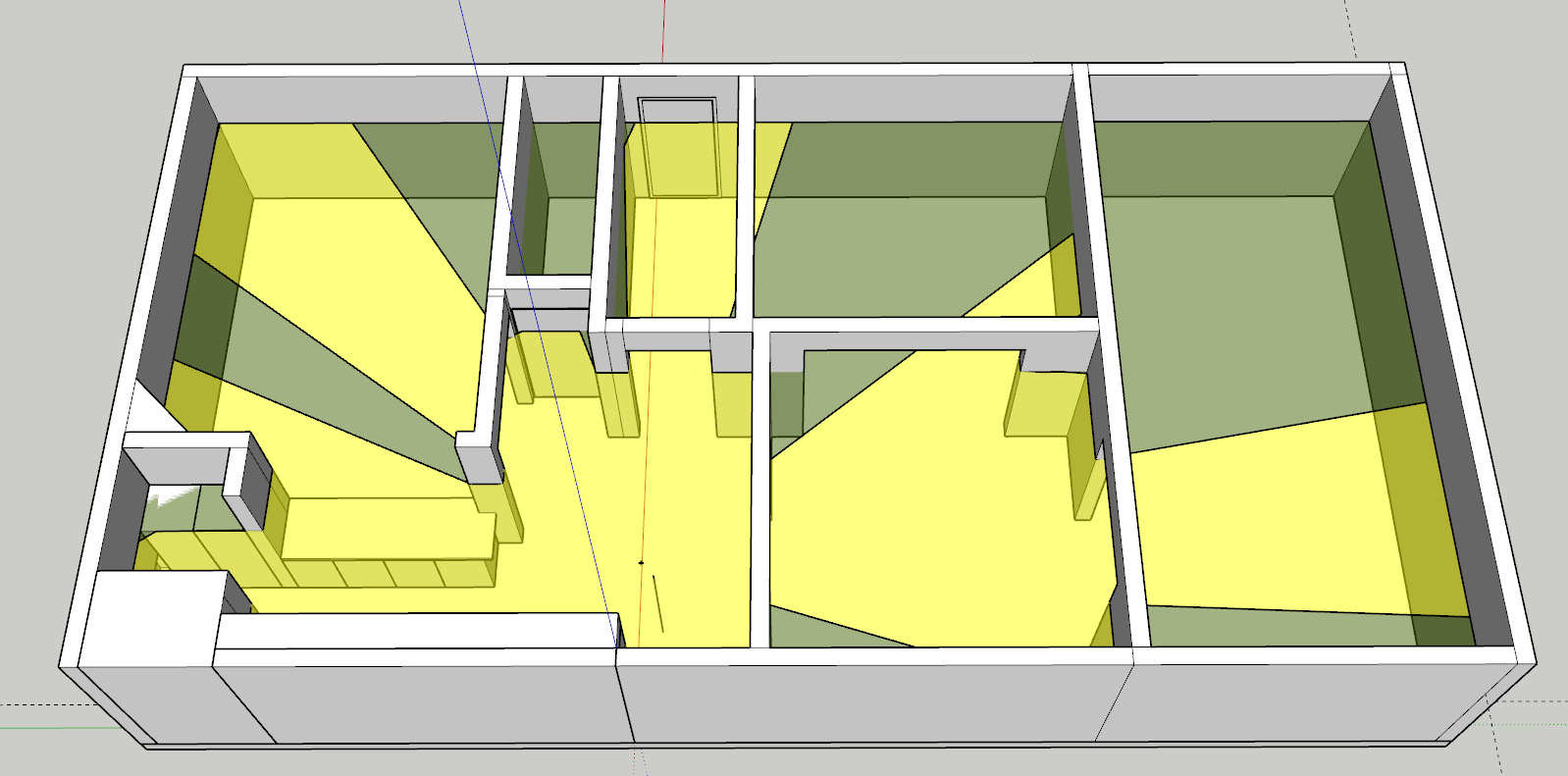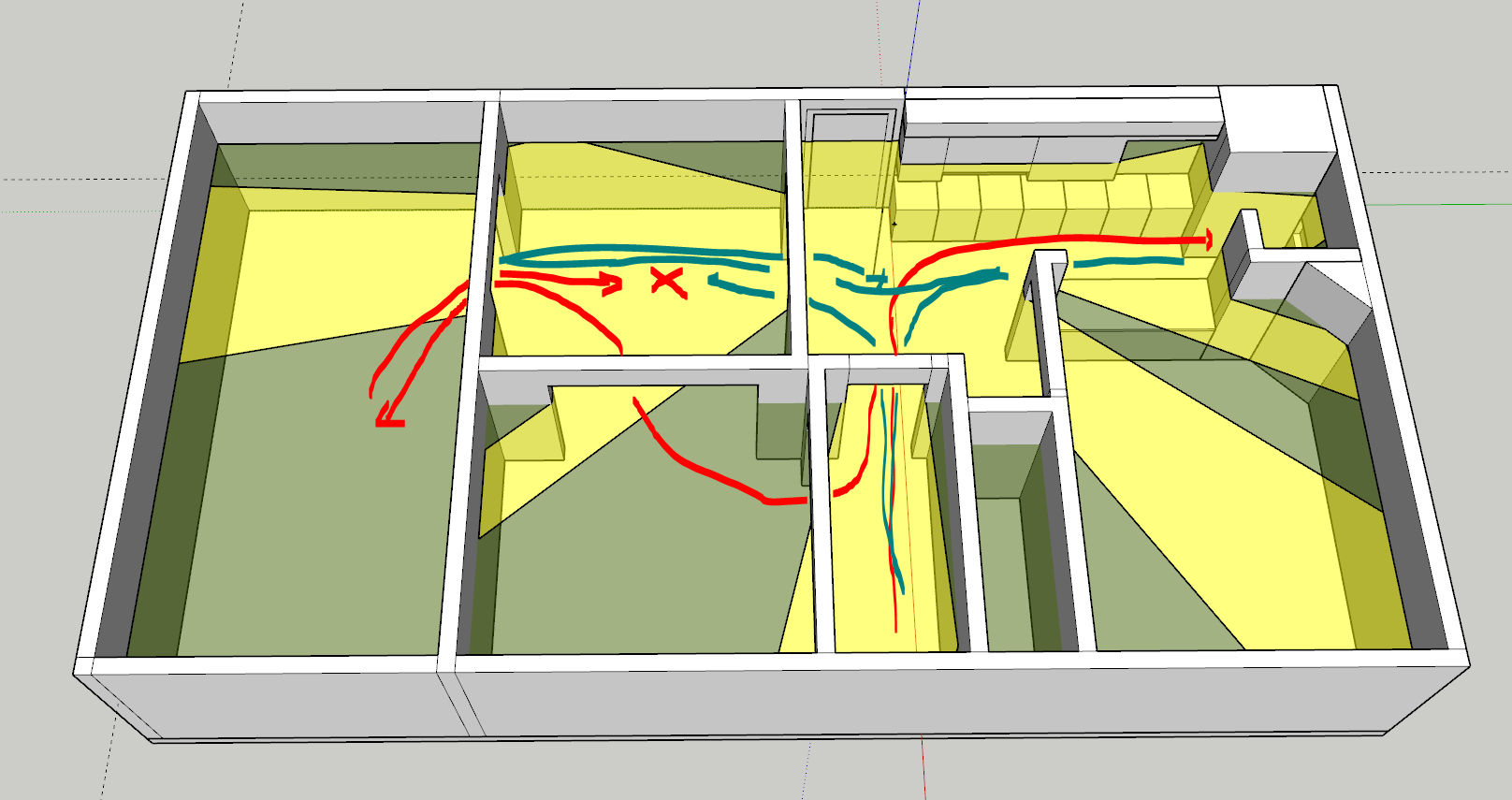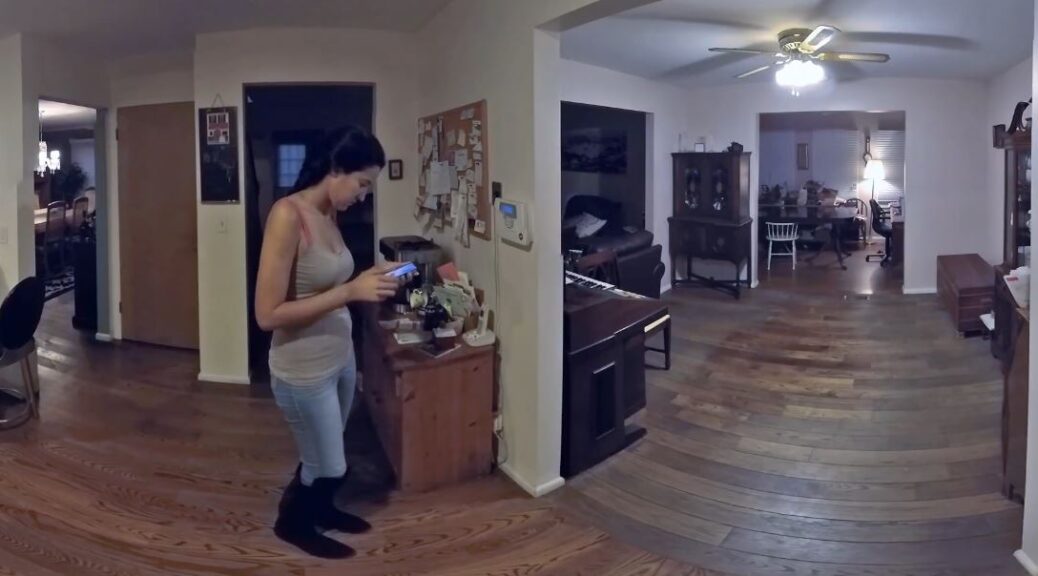In classic movies, the editing and framing organize the story. Let’s remind ourselves that in the structure of a story, the spectator can occupy three possible positions in relation to the narrative’s progression: first option, the spectator is synchronous with the unfolding of the events, he discovers the events at the same time as the protagonists, and the story advances in the pace of these discoveries. Second option, the spectator is behind the protagonist(s) and the unfolding of events. The story moves forward through a succession of revelations that make the viewer catch up. Third option, the viewer is ahead of the protagonist(s) and has better information than the protagonist(s).
The 2015 short film « Lock Your Doors » by Jeremy Sciarappa is a perfect example of consequential editing by the viewer. The pitch, very simple, features an assassin who enters a house to assault the occupants. The point of view is fixed, everything is played out according to the directions of the gaze. According to the orientation of the gaze, the three spectator/protagonist positions are set up varying almost infinitely the construction of the narrative and the conduct of suspense.

The space unfolds along three main axes, offering depths, discoveries and off-fields. We will see later, the importance of these off-fields. The woman enters by the left, the glance follows her towards the right direction, in depth.

Once at the end of the room on the right, she comes back to us.

She then passes near the central point which acts as a close-up and disappears in the central axis, we have now visited the whole house and understood the distribution of spaces. 
If our gaze has remained on the central axis, it sees the assassin enter the house, then slide out of frame to the adjoining room and reappear on the right. If we have not seen the whole movement of the assassin, we may either be completely unaware of his presence, or we may not know where he is or have not understood where he is coming from. 
The assassin goes back to the central axis, the woman returns to the right, the two actions are almost simultaneous, so that one can either follow one or the other or alternate. 
The grouping is done on the right axis, the assassin traps the woman. Either we have anticipated the action, or we learn it by the consequences, or we discover it during its unfolding. 
The assassin leaves his victim on the ground and passes through the center, there is a close-up effect induced by the movement of the character. We see that he has a mask. The victim passes in the background.

Three actions are triggered simultaneously, leaving us the choice to organize the sequentiality. The assassin hides at the bottom of the left axis, the friend arrives through the central axis, the woman’s corpse remains visible as a focal point.

The friend passes through the center, close-up, and rushes to the right axis. The assassin has disappeared. Depending on the organization of our sequentiality, we may have lost him. 
Here again, two simultaneous actions in opposite axes. The friend mourns the death of the woman while the assassin reappears. If we have seen him, we anticipate the new crime, if not we remain in empathy with the previous crime. 
The assassin passes through the center again and gives himself a close-up. The linear trajectory induces the new drama to come. If we follow the assassin, we have a left-right pan, if we are on the friend, the assassin enters the frame.
 Figure 9 -apartment 3d layout deduced from the film, visualization in yellow of the zones in the field of the camera and in green out of view.
Figure 9 -apartment 3d layout deduced from the film, visualization in yellow of the zones in the field of the camera and in green out of view.

Figure 10 – circulations, Woman (green), assassin (red) (the view of the apartment has been flipped from the previous image).

